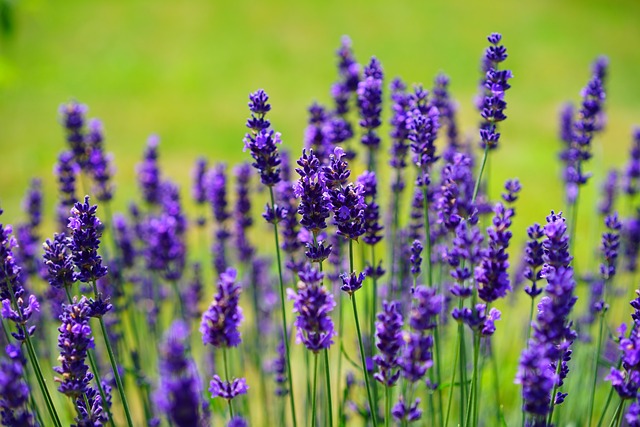Lavender, with its fragrant blooms and soothing aroma, is a beloved perennial herb in many gardens. Its versatility, low maintenance, and various culinary and therapeutic uses make it a popular choice for gardeners. However, one common question that arises among lavender enthusiasts is, “Can lavender survive winter?” In this comprehensive guide, we will explore the factors affecting lavender’s winter survival, tips for protecting your lavender plants during the cold months, and common problems and solutions related to winter care.
Understanding Lavender
Before diving into the specifics of lavender’s winter survival, it’s essential to have a basic understanding of this aromatic herb.
There are over 450 known lavender varieties, each with its unique characteristics, including size, bloom color, and cold hardiness. While some lavender varieties are more cold-resistant than others, the key to successful winter survival lies in selecting the right variety for your region.
Lavender originates from regions with Mediterranean climates, where winters are mild and summers are warm and dry. Its natural habitat provides insight into the plant’s preferences and cold tolerance.
Factors Affecting Lavender’s Winter Survival
1. Temperature
Lavender is adapted to tolerate mild winter temperatures. However, extreme cold can be detrimental to its health. Freezing temperatures can lead to frost damage or even kill the plant if not adequately protected.
2. Moisture
Excess moisture in the winter can be a significant threat to lavender. Poor drainage can lead to root rot, which is especially harmful during colder months when the plant’s growth is slowed down.
3. Soil Type
Lavender thrives in well-draining, sandy or gravelly soil. Soil that retains too much water can lead to root issues and make it challenging for the plant to survive winter.
4. Sunlight
Lavender requires plenty of sunlight to thrive. Reduced daylight hours during winter can weaken the plant, making it more susceptible to cold damage.
5. Wind and Snow
Strong winds can desiccate lavender foliage and make the plant more vulnerable to cold. Heavy snowfall can also weigh down the branches, potentially causing them to break.
Preparing Your Lavender for Winter
Now that we’ve discussed the factors that influence lavender’s winter survival, let’s explore the steps you can take to prepare your lavender for the cold season.
1. Choose Cold-Hardy Lavender Varieties
The first step in ensuring your lavender survives winter is selecting a variety suited to your climate. English lavender varieties, such as Lavandula angustifolia, tend to be more cold-hardy compared to other types like French lavender (Lavandula stoechas). Research local varieties that thrive in your region.
2. Planting Location
Choose a well-draining site with full sun exposure for your lavender. Avoid low-lying areas that may accumulate water during winter. Elevating the plant slightly can improve drainage.
3. Pruning
Pruning lavender in late summer or early fall helps remove any dead or woody growth, improving air circulation and reducing the risk of fungal diseases during winter. Be careful not to prune too late, as new growth may be susceptible to cold damage.
4. Mulching
Applying a layer of mulch around the base of the lavender plant can help insulate the roots and protect them from extreme cold. Use materials like straw or pine needles, but avoid piling mulch directly against the plant’s crown.
5. Watering
Reduce watering as winter approaches. Lavender prefers to be slightly dry, especially during the colder months. Overwatering can lead to root rot. Water sparingly, focusing on the root zone, and avoid wetting the foliage.
6. Wind Protection
If your region experiences strong winter winds, consider using a windbreak to shield your lavender from harsh gusts. This can help prevent desiccation and damage to the plant.
7. Covering
In regions with extremely cold winters, covering your lavender with burlap or a frost cloth can provide extra protection. Make sure the covering is adequately anchored to prevent it from blowing away.
Monitoring Lavender During Winter
Once you’ve prepared your lavender for winter, it’s crucial to monitor the plant’s condition throughout the cold season.
1. Inspect for Frost Damage
After frost or extreme cold spells, inspect your lavender for any signs of damage. Look for discolored or wilted foliage. If you notice frost damage, it’s essential to act promptly.
2. Watering in Winter
While lavender prefers drier conditions during winter, it’s essential to water if there has been an extended period of drought. Ensure the soil is not bone dry, as some moisture is necessary for the plant’s survival.
3. Prune Sparingly
Avoid heavy pruning during winter, as this can stimulate new growth that is susceptible to cold damage. Instead, wait until spring to do any significant pruning.
Common Winter Problems and Solutions
Despite your best efforts, there may still be challenges to overcome during lavender’s winter survival. Here are some common problems and their solutions:
1. Frost Damage
- Problem: Lavender can suffer from frost damage during cold spells.
- Solution: Trim away damaged foliage and allow the plant to recover in spring. Use a frost cloth or cover during particularly cold nights.
2. Root Rot
- Problem: Lavender roots can rot if exposed to excessive moisture.
- Solution: Ensure proper drainage and avoid overwatering. Plant lavender in raised beds or mounds if drainage is a concern.
3. Snow Accumulation
- Problem: Heavy snow can weigh down lavender branches, causing them to break.
- Solution: Shake off excess snow gently, or use stakes to support the branches and prevent breakage.
4. Lack of Sunlight
- Problem: Reduced daylight hours in winter can weaken lavender.
- Solution: If possible, provide supplemental lighting for your lavender plants to compensate for the reduced sunlight.
5. Pests
- Problem: Some pests, like aphids, can infest lavender even during winter.
- Solution: Monitor your plants for signs of pests and treat as necessary with organic pest control methods.
Lavender Care in Spring
As winter transitions into spring, it’s time to shift your lavender care routine.
1. Pruning
In early spring, prune your lavender to remove any remaining dead growth and shape the plant. Be cautious not to cut into the woody stems, as this can harm the plant.
2. Fertilization
Apply a balanced, slow-release fertilizer to your lavender in early spring to encourage healthy growth. Follow the manufacturer’s recommendations for application.
3. Watering
As temperatures rise in spring, resume regular watering. Ensure the soil is consistently moist but not waterlogged.
4. Mulching
Consider refreshing the mulch around your lavender to help retain moisture and deter weed growth.
FAQ: Can Lavender Survive Winter?
In this FAQ guide, we address various queries related to lavender’s ability to survive winter, offering insights into the factors that influence its winter resilience and providing expert tips to help your lavender thrive even in chilly climates. Explore these frequently asked questions to discover the secrets of lavender’s winter survival.
1. Can French Lavender Survive Winter?
- French lavender (Lavandula stoechas) is less cold-hardy than English lavender but can survive mild winters with proper care. Consider protection during harsh cold spells.
2. Can Lavender Plants Survive Winter?
- Lavender plants, especially English lavender, can survive winter if provided with well-draining soil, sunlight, and proper winter care measures.
3. Can Lavender Survive Canadian Winter?
- English lavender varieties are more likely to survive Canadian winters if adequately protected from extreme cold, snow, and moisture.
4. Can Lavender Survive Winter in Pots?
- Lavender in pots can survive winter when placed in a sheltered location, mulched, and insulated. Potted lavender may need extra care in cold climates.
5. Can Lavender Tree Survive Winter?
- Lavender trees can survive winter if they are cold-hardy varieties and receive appropriate protection from frost, wind, and excessive moisture.
6. Can Potted Lavender Survive Winter?
- Potted lavender can survive winter with care. Insulate the pot, protect from extreme cold, and ensure well-draining soil to prevent root rot.
7. Can Spanish Lavender Survive Winter?
- Spanish lavender (Lavandula stoechas) is less cold-resistant than English lavender but can survive mild winters with proper precautions.
8. Does Lavender Survive Winter?
- Lavender can survive winter if you follow essential winter care steps, including proper pruning, mulching, and protection from frost and moisture.
9. Will a Lavender Tree Survive Outside in the Winter?
- The survival of a lavender tree outdoors in winter depends on the variety, climate, and protective measures taken. Cold-hardy types have a better chance.
10. Will Lavender Survive Winter?
- Lavender can survive winter in many regions with the right care. Select cold-hardy varieties and implement winter protection strategies.
11. Will Lavender Survive Winter Outside?
- Lavender can survive winter outdoors if it is a cold-hardy variety and receives the necessary winter care, such as mulching and shielding from harsh elements.
12. Will Potted Lavender Survive Winter?
- Potted lavender can survive winter when adequately protected from cold, wind, and moisture. Provide insulation and proper care to ensure its survival.
Remember that the specific survival of lavender during winter can vary depending on factors like your location, lavender variety, and the severity of your winter conditions. Proper winter care is essential to help your lavender thrive year after year.
Conclusion
In conclusion, lavender can survive winter with proper care and attention. The key to successful lavender winter care lies in selecting cold-hardy varieties, providing well-draining soil, ensuring adequate sunlight, and protecting the plant from extreme cold, moisture, and wind.
By understanding lavender’s natural habitat and its specific requirements, you can enjoy the beauty and benefits of this aromatic herb year-round. Whether you’re growing lavender for its aromatic blooms, culinary uses, or therapeutic properties, following these guidelines will help ensure its survival and thriving in your garden.
So, the next time someone asks, “Can lavender survive winter?” you can confidently answer, “Yes, with the right care and preparation, lavender can not only survive winter but also thrive in your garden.”










